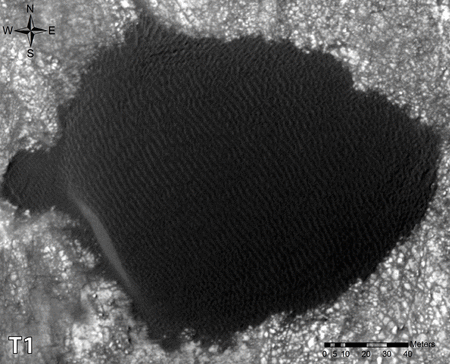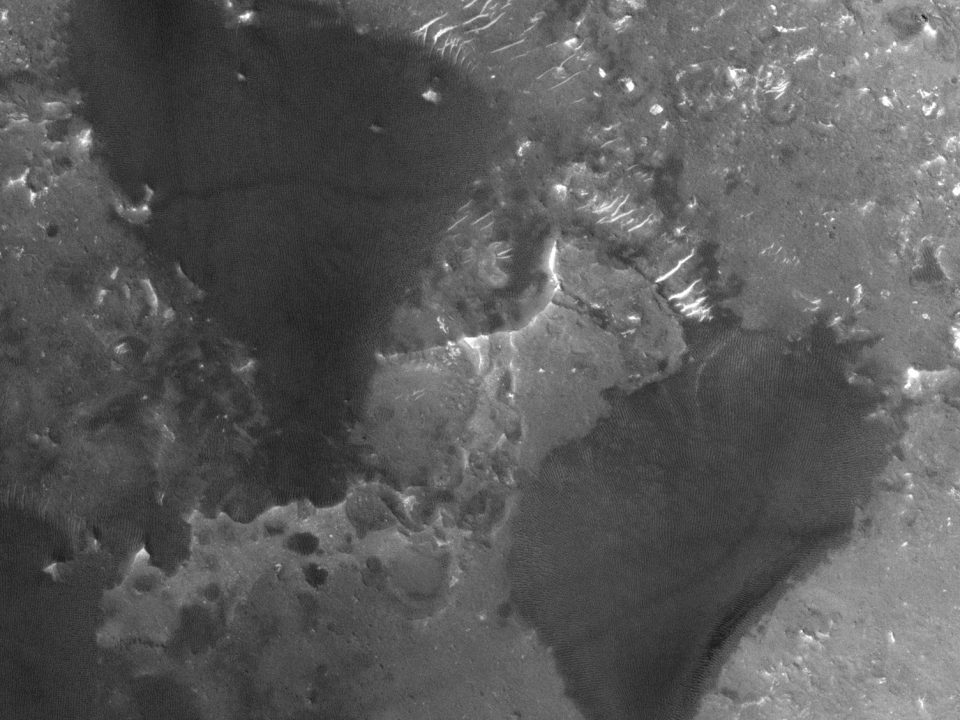Curiosity about sand dunes (part 1/2)

Too steep for ripples
November 24, 2015
Curiosity about sand dunes (part 2/2)
December 21, 2015Sorry for the pun in the title there, but NASA asked for it by naming their rover like that. And you’ve seen it done a hundred times, so let’s grit our teeth, smile, and carry on.
Anyway.
So I’m more excited now about a space mission than I have been in a long time. A Mars rover is finally visiting sand dunes, after so many years of peering at them from orbit and seeing them in rover images in the far distance. They took their time getting there, but now it’s there. Taking images of the dunes, and presumably other data as well. Here’s what it looks like from above:
Map credit: NASA/JPL/CalTech/MRO/UofA/HiRISE/Processed by Phil Stooke

Today, December 14, 2015, is Sol 1193 for Curiosity. On Sol 1176, Curiosity took a bunch of color images looking up at “High Dune”. Here’s what they look like all mosaicked together:
Image credit: NASA/JPL-Caltech/MSSS

Looking from the bottom up, you are panning up the windward side of the dune, looking at the lovely ripples that cover the entire dune. You can see the biggest ripples in the first image from space. Using those images, my colleague Simone Silvestro and others (including me, yay) measured that they move downwind (towards the left in the above image) at a rate of 0.66 meters (26 inches) every Earth year. Here’s a 3-frame movie from that paper, showing how the dunes and ripples move over the course of 5 years (which is ~2.5 Mars years) in 2006, 2008, and again in 2011. Note that this isn’t the same dune that Curiosity imaged above.
Image credit: Silvestro, S., D. A. Vaz, R. C. Ewing, A. P. Rossi, L. K. Fenton, T. I. Michaels, J. Flahaut, and P. E. Geissler (2013), Pervasive aeolian activity along rover Curiosity’s traverse in Gale Crater, Mars, Geology, 41(4), 483–486, doi:10.1130/G34162.1.

So yes, these dunes are moving! We might even see changes as Curiosity takes more images. We might see sand grains that have bounced onto the deck of the rover. We might even be able to learn something about how the wind moves sand on Mars, how that process differs from that on Earth, and how strong the wind blows. Cool, eh? Check back next week for more pictures of these dunes. I’ll be showing some closeups of the sand and speculating on what it’s made of and why it’s different from windblown sand on Earth.


2 Comments
How easily (or not) can Curiosity roll through those dunes?
From what I understand, they’re trying to figure that out. Apparently sometimes the rover does just fine on sand, and other times it gets mired in it. It probably depends on how compacted the sand is – if you ever go walking on a dune, you’ll learn that the windward side is much easier to walk on than the lee side, because the windward side is continually pounded by the wind and saltating sand, so it compacts a little.